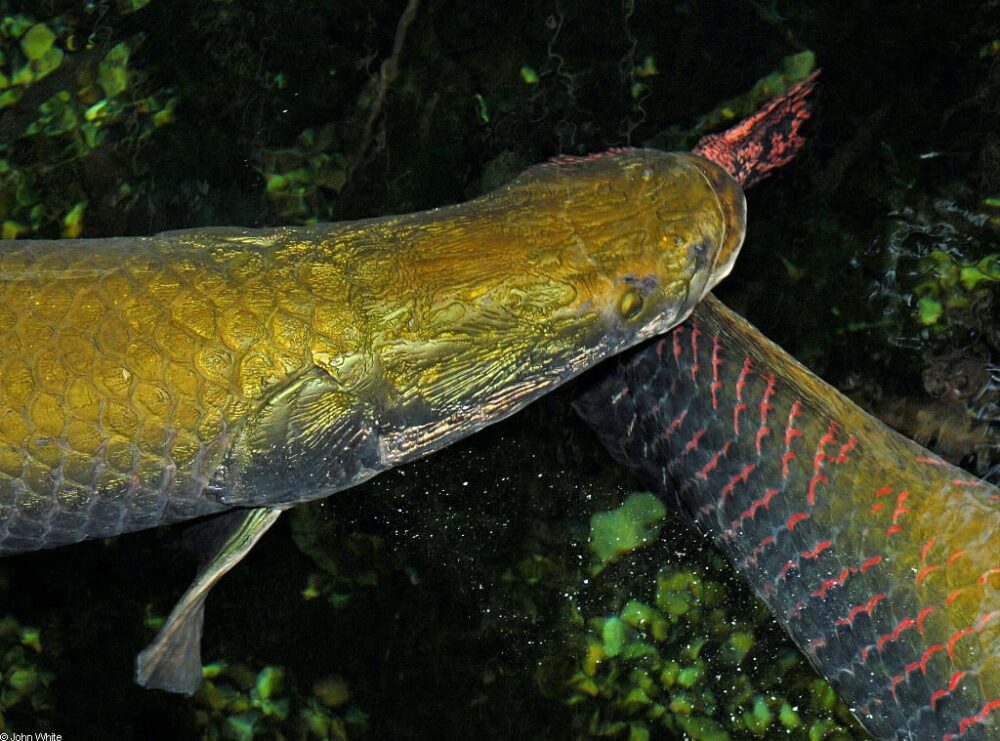Fish that live in piranha infested waters have evolved scales to protect them from the predator’s fearsome teeth and are being used to develop new types of body armour.
They are fearsome predators that have been exploited by James Bond villains and horror movie directors to strike fear into swimmers.
But while piranhas have the reputation for being able to strip their victims to the bone in minutes, some species of fish that live alongside them have evolved ways of avoiding their sharp teeth and powerful jaws. Scientists have found that a freshwater fish called Arapaima gigas, which lives in the Amazon River in Brazil, has developed tough armour that protects them from piranha bites.
Now these fish are being used to help develop new types of body armour to protect people against bullets and knife attacks.
Researchers found that the protective scales of Arapaima gigas, are capable of absorbing the impact of a piranha bite by flexing and twisting to spread the stress created by the teeth. Yet the scales are also hard enough to cause the teeth of the piranha to fracture, meaning Arapaima rarely fall prey to the veracious Amazon predators.
Dr Robert Ritchie, chair of material sciences at the University of California Berkeley and who led the research, described the scales as having a structure like twisted plywood that deforms under pressure. The outer layers are hardened, making them resistant to penetration by the teeth while an overlapping, corrugated structure helps share the strain of the bite.
He said they are now attempting to mimic the structure to create new types of body armour of shields. He said: “Without such scales the Arapaima as a very large fish would be easy prey for piranhas.
“The fish scale is designed ideally for armour, which has a hard external layer to resist penetration by a bullet and a flexible and tough inner layer to accommodate the excessive deformation without fracturing the armour.
What we are trying to do is to create composite ceramics with the hard external layer and some flexible foundation to use as a shield or armour.
Arapaima are the largest fish found in South American rivers, growing up to six feet seven inches long and weighing around 220lbs. The researchers, whose work is published in the journal Nature Communications, used X-rays to determine the structure of the layers, or lamella, that make up the scales that coat the fish’s body. Each layer is made from the protein collagen, which is also found in hair and nails. The upper layers have a high mineral content, making them hard but brittle.
Lower layers have lower mineral content meaning they are more flexible. These are layered on top of each other in a twisting pattern, which the researcher described as being a Bouligand-like arrangement.
When they are put under strain they rotate further, as the collagen fibres stretch and slide. Previous work has shown the scales can resisting pressures of up to 12 gigapascals, or 1.7 million pounds per square inch.
To give some idea of how large this is, commercial diamonds are created using pressures of 18 gigapascals.
Dr Ritchie said: “The dermal scales of the Arapaima fish are a prime example of how the structural arrangement of simple biological components can create armour with the capacity to be tough yet penetration resistant.
“The ability of the A. gigas’ outer dermal layer to resist predatory attacks derives from its sophisticated structure from the nano- to macro-length-scales.
“The outer mineral layer gives the scale hardness and penetration resistance whereas the overlapping of the scales and the corrugated outer surface of the mineral layer allow the scales to bend transferring tensile stress to the inner lower-mineralised lamellae.” Piranha themselves have one of the most powerful bites for their size – rows of interlocking triangular teeth are powered by huge muscles that make up most of the fish’s head.
Despite their reputation, attacks on humans are relatively rare. there are an estimated 30 different species of piranha with most measuring between five inches to 10 inches in length. Rather than being ferocious predators that hunt in schools they are mainly timid fish.
However, the red bellied piranha are known to attack in this way when water levels are low and they have been starved of food.
Scientists have previously pitted piranha teeth against Arapaima scales by mounting them on rubber and pressing the teeth into them with an industrial hole puncher. The teeth cracked before they reached the rubber underneath.










